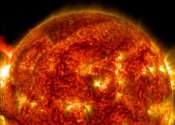Bethe strings experimentally observed
Ninety years ago, the physicist Hans Bethe postulated that unusual patterns, so-called Bethe strings, appear in certain magnetic solids. Now, an international team has succeeded in experimentally detecting such Bethe strings ...









